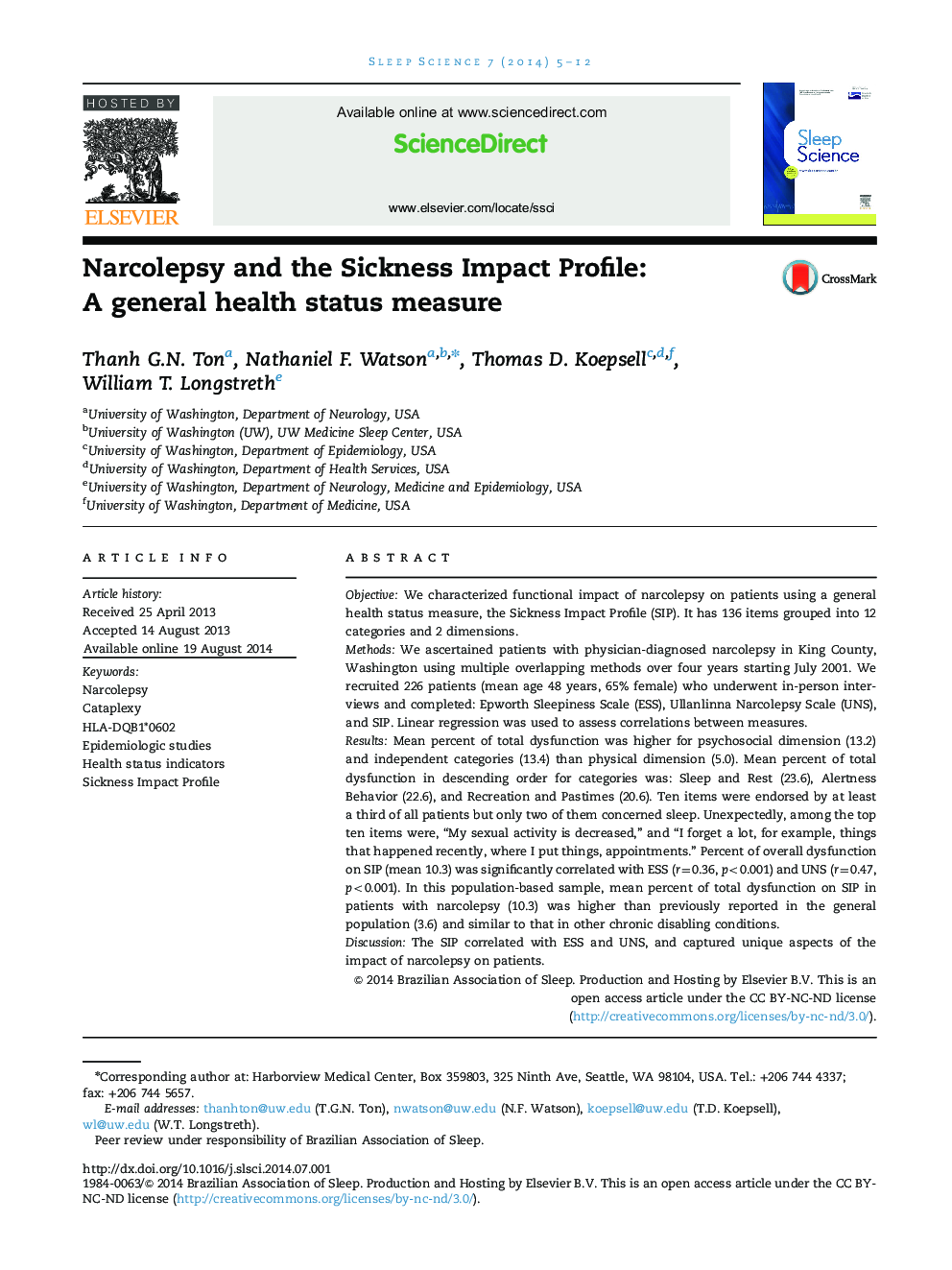| Article ID | Journal | Published Year | Pages | File Type |
|---|---|---|---|---|
| 3026607 | Sleep Science | 2014 | 8 Pages |
ObjectiveWe characterized functional impact of narcolepsy on patients using a general health status measure, the Sickness Impact Profile (SIP). It has 136 items grouped into 12 categories and 2 dimensions.MethodsWe ascertained patients with physician-diagnosed narcolepsy in King County, Washington using multiple overlapping methods over four years starting July 2001. We recruited 226 patients (mean age 48 years, 65% female) who underwent in-person interviews and completed: Epworth Sleepiness Scale (ESS), Ullanlinna Narcolepsy Scale (UNS), and SIP. Linear regression was used to assess correlations between measures.ResultsMean percent of total dysfunction was higher for psychosocial dimension (13.2) and independent categories (13.4) than physical dimension (5.0). Mean percent of total dysfunction in descending order for categories was: Sleep and Rest (23.6), Alertness Behavior (22.6), and Recreation and Pastimes (20.6). Ten items were endorsed by at least a third of all patients but only two of them concerned sleep. Unexpectedly, among the top ten items were, “My sexual activity is decreased,” and “I forget a lot, for example, things that happened recently, where I put things, appointments.” Percent of overall dysfunction on SIP (mean 10.3) was significantly correlated with ESS (r=0.36, p<0.001) and UNS (r=0.47, p<0.001). In this population-based sample, mean percent of total dysfunction on SIP in patients with narcolepsy (10.3) was higher than previously reported in the general population (3.6) and similar to that in other chronic disabling conditions.DiscussionThe SIP correlated with ESS and UNS, and captured unique aspects of the impact of narcolepsy on patients.
